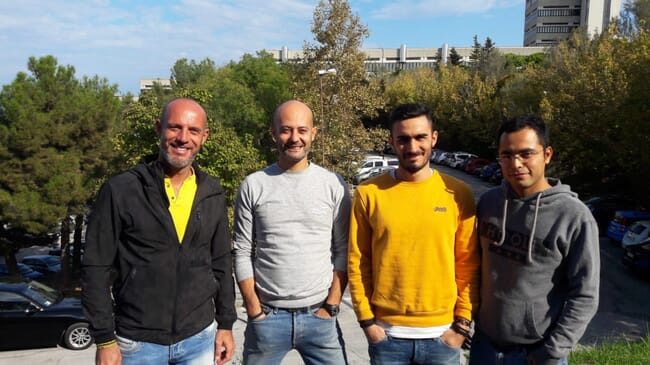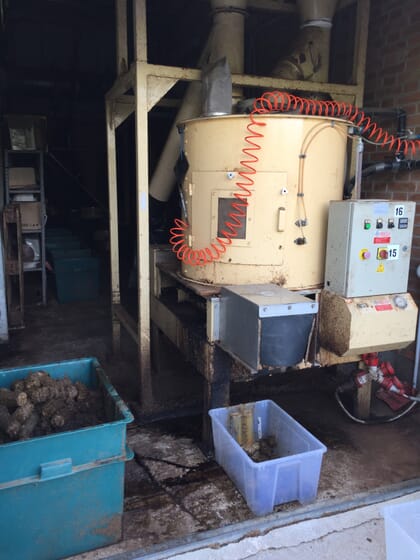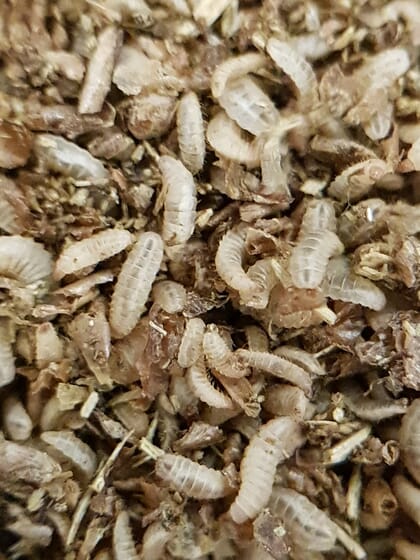Having an entomophobe creating fish feeds that include enriched insect meal might seem illogical, but thankfully Ike Olivotto’s phobia doesn’t seem to have jeopardised the success of a project that’s currently underway in Italy.

“I have a fear of insects and am still not very confident in their presence, but the project is going remarkably smoothly nonetheless,” Dr Olivotto chuckles, as he explains the NUTRIFISH initiative.
The three-year project includes a number of stages and the first, which began in March 2018, involves producing black soldier fly (Hermetia illucens; BSF) larvae on a substrate made largely from waste from the coffee industry.

“Coffee companies discard the husks that surround the coffee beans, producing tonnes of waste every day, which they normally need to pay the local authorities to dispose of. We’re working with a local coffee company, Saccaria, who are giving us this waste for free,” explains Olivotto, associate professor of aquaculture at the Università Politecnica delle Marche, in Ancona, on Italy’s Adriatic coast.
“It makes an ideal substrate for growing BSF larvae but, in order to improve the nutritional profile of the larvae – and raise the levels of the polyunsaturated fatty acids [PUFAs] such as EPA and DHA – we’ve been experimenting with adding microalgae to the substrate,” he adds.
This addition of microalgae is one of the many factors that makes the project, as far as Dr Olivotto knows, unique.
“A research group in Bergen tried using macroalgae [ie seaweed] as part of the substrate for insect production, and this was shown to raise the PUFA content of the BSF larvae,” he explains. “Other research groups used different substrates including some collected from the wild. Some of these substrates were able to raise the PUFA content, but at the same time others were able to determine an accumulation of pollutants [ie heavy metals] in the larvae. However, this was harvested from the wild and the larvae were absorbing heavy metals and other pollutants from it.”
Part of the reason no one has previously tried using microalgae is its perceived expense. But Dr Olivotto thinks that, by using the right species, in the right proportions, it can be both economically viable and clean.
“We’ve trialled two species – Schizochytrium and Isochrysis – both of which were available from AlghItaly, a local producer that uses clean spring water for its production. We found that both had a similar PUFA content but, as the former was cheaper and easier to produce, we decided it would be the most suitable for our trials,” he says.
The trials to date have involved testing the right level of algal inclusion and the relative merits of the two species. Dr Olivotto is now confident that they have hit upon the right species, while he thinks that the final inclusion level of the algae in the substrate – which is being decided in early October – is likely to be 10 percent.
“Given the relatively low inclusion levels needed and the relative ease of producing Schizochytrium, we think it can be an economical ingredient. What’s more the microalgae are microbiologically pure, you can buy them in powdered form, they’re clean and you can guarantee a year-round supply, giving it a number of advantages over using macroalgae in the substrate,” he adds.
Traditionally insects have been farmed purely to help replace the protein that is usually provided by fishmeal in aquafeeds. However, as Dr Olivotto points out, the BSF larvae can provide much more.
“People must also think about the lipid content and the health benefits of increasing the proportion of PUFAs in the foods they eat,” he observes.

The project partners will also look into a number of other factors that have not been considered before.
“We’ll also be looking at what impact, if any, the antibiotic peptides in insects have – both in terms of fish health and human health. While most insect research projects have purely focused on using insect ingredients as a substitute for fishmeal and fish oil, we want to look at other factors, such as food safety and benefits to both fish and human health, by investigating heavy-metals accumulation and the presence of antibiotic resistances,” explains Dr Olivotto.
“While most projects use de-fatted insect meal, because of the supposed anti-nutritional properties of insect lipids, we won’t be removing the fat and testing the effects,” he concludes.
The next steps
The next phases of the project will involve trialling the enriched insect meal in aqua feeds, first on zebrafish at the university’s own labs, in trials which are due to start in December.
“Zebrafish are useful because they have a short life cycle, which means we can quickly find out how the feeds affect them at key physiological stages. We’ll be running tests during the whole zebrafish life cycle, namely: at the end of their larval stage, after 20 days; after three months, when they near the end of their juvenile phase; and after six months, when they are mature. This will allow us to examine what effect the diets have on factors like fish growth, welfare and reproduction,” explains Dr Olivotto.
The feeds will then be trialled in a local aquaponics facility run by MJ Energy, which is producing a range of crops and fish, including saffron and sturgeon. The latter will be the subject of the final feed trials.
“Sturgeon might not be the most important farmed species in Italy, but the project funding is reliant on us only using partners in certain parts of the country, and a previous study has shown that these fish thrive on feeds containing insect meals,” Olivotto reflects.
And as for his own phobia?
“We’ll be hosting an insect conference day as part of the university’s 50th anniversary next year and our guests will be offered insect-based foods,” he says, adding: “I promise I’ll try some!”

